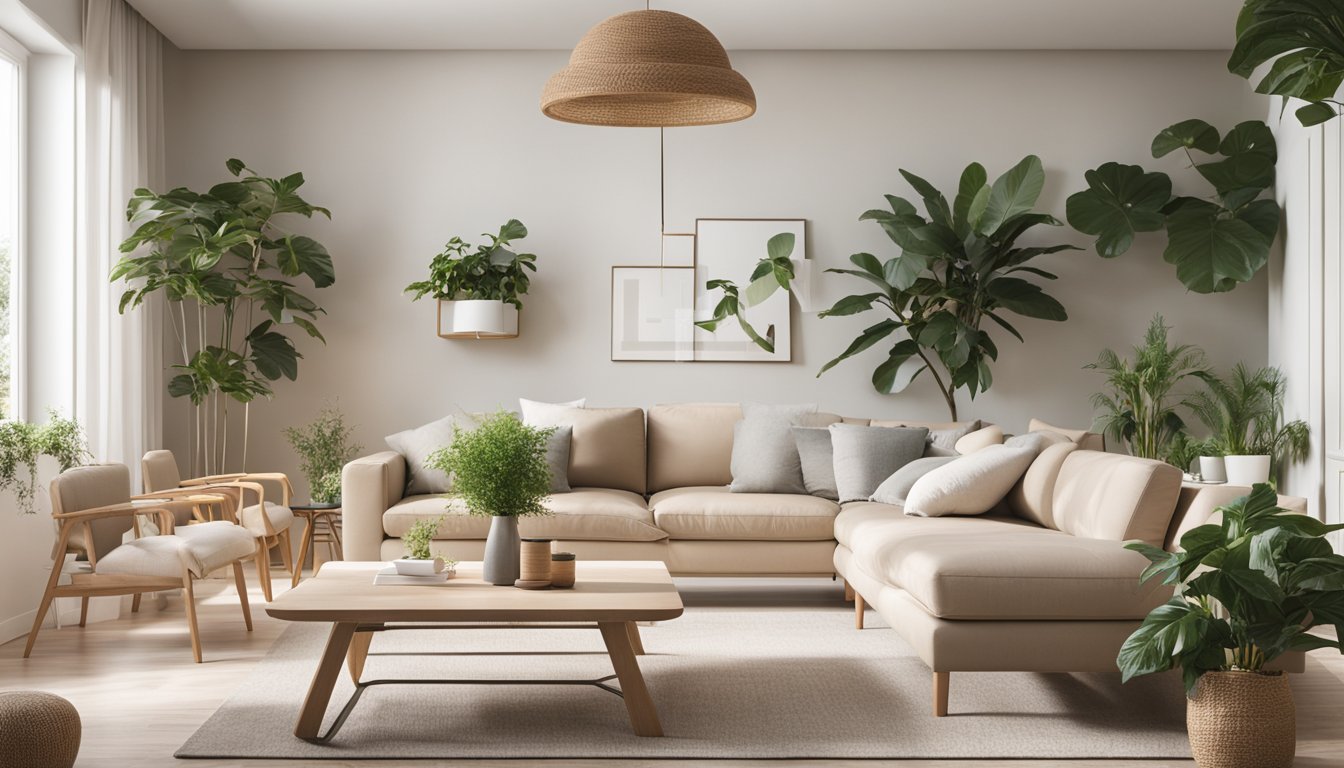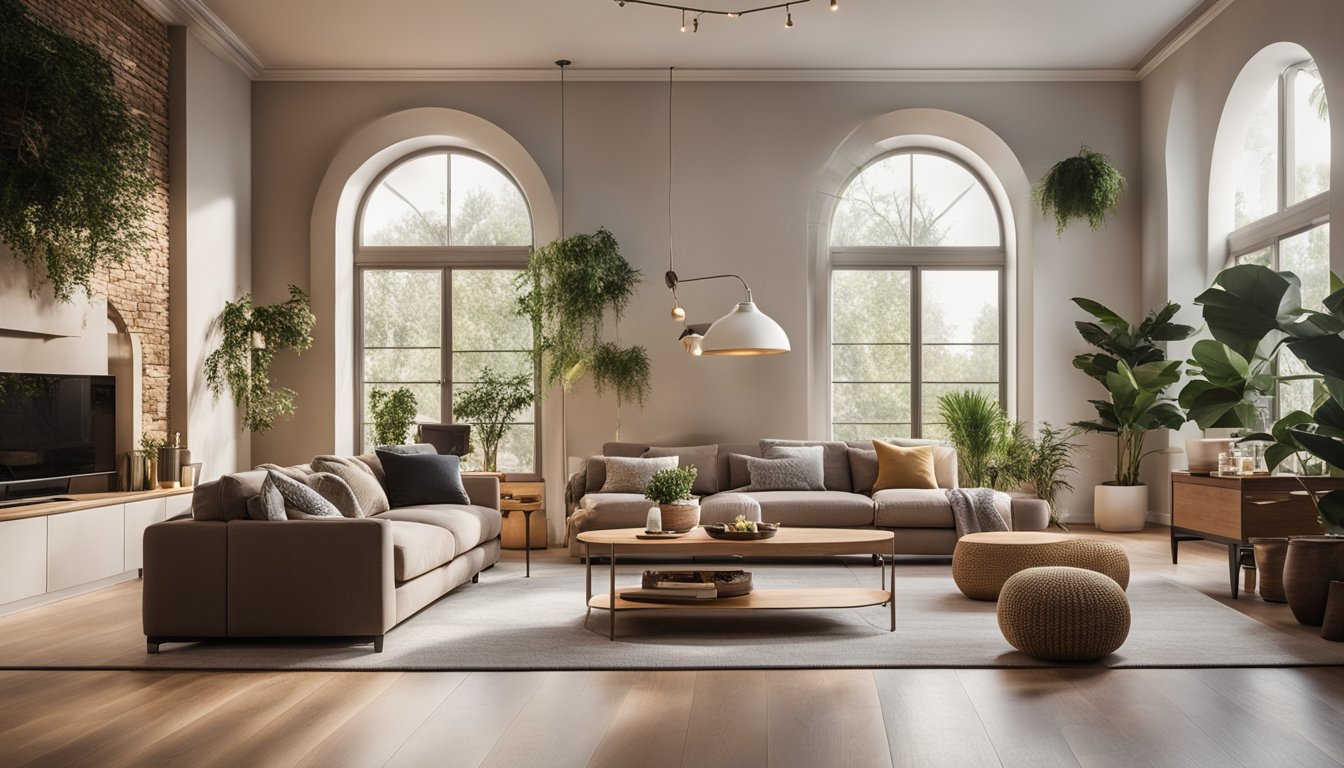Late updated: 02 Nov 2024 14:11
Written by: Daniel Harper
Transform Your Home With Modern Eco-Friendly Paint Ideas: Freshen Up Your Space
Eco-friendly paint ideas offer modern solutions that transform our living spaces while honouring our commitment to sustainability. By incorporating new innovations in eco-friendly paints, we not only enhance our home's aesthetics but also reduce the environmental impact, contributing to a healthier planet. Choosing non-toxic, sustainable paints is a crucial step in developing a sustainable home.

We have an opportunity to express our personal style while embracing sustainable choices that align with sustainable living. The use of environmentally friendly materials keeps our homes beautiful and, at the same time, safeguards our well-being. This article explores inspiring ideas and practical insights for those ready to embark on this eco-friendly journey.
Colours that transform our spaces and align with environmental responsibility simultaneously create a powerful combination for contemporary living. With careful selection, our choice of paint can uphold ecological values and reduce toxic footprints, sustaining our environment for future generations. Explore the practical tips and get inspired with ideas that cater to both your taste and the planet's needs.
Key Takeaways
- Eco-friendly paints are vital for a sustainable home.
- We can maintain environmental responsibility through informed design choices.
- Sustainable painting solutions support healthier living and a healthier planet.
The Foundations of Eco-Friendly Painting
In our exploration of eco-friendly painting, it's essential to understand the characteristics and benefits these options bring to our living spaces. We'll examine the ingredients and features that distinguish eco-friendly paints, their impact on indoor air quality, and guide you in choosing the right tools and materials for your painting project.
Understanding Eco-Friendly Paints
Eco-friendly paints are designed to reduce environmental impact. These paints use sustainable ingredients and natural materials, markedly different from conventional paints that often contain high levels of volatile organic compounds (VOCs). Low-VOC paints emit less pollution into our homes, thus enhancing indoor air quality.
Some brands also incorporate components like recycled materials or even ingredients that actively absorb CO2, contributing to a healthier atmosphere. Eco-friendly paints may come from renewable resources and can promote recycling and upcycling initiatives. This aligns with our commitment to sustainability, encouraging us to consider both the ecological impact and the longevity of the finish.
Advantages of Sustainable Paints for Indoor Air Quality
The benefits of choosing sustainable paints go beyond just aesthetics. Low-VOC paints mitigate the release of toxic fumes, which is a significant advantage for our indoor air quality. This reduction in VOCs helps create a safer home environment, particularly important for children or those with respiratory issues.
Additionally, using eco-friendly paints can align with other air-purifying strategies, such as incorporating air-purifying plants and ensuring proper ventilation. The cumulative impact of these efforts is significant, as we work towards a healthier and more pleasant living space. By choosing paints that contribute less to air pollution, we embrace a proactive approach to maintaining indoor air purity.
How to Select the Right Tools and Materials
Choosing the right tools and materials is crucial in executing a successful eco-friendly painting project. Quality brushes and rollers are key; they ensure smooth application and can be reused, reducing waste. For materials, selecting paints with low or no VOC content is a priority, complemented by responsibly sourced equipment like brushes with handles made from reclaimed wood.
Recycling used materials and incorporating upcycling practices further enrich our eco-friendly painting efforts. By thoughtfully selecting tools and materials, we not only achieve a professional finish but also support a sustainable approach throughout the entire painting process. This holistic method underscores the importance of every element in eco-friendly painting, fostering a sustainable and beautiful home environment.
Implementing Eco-Friendly Design and Maintenance

Transforming a home with eco-friendly design involves using nature-inspired colour palettes, maximising light and space, and incorporating sustainable materials. Regular upkeep and maintenance ensure the longevity and aesthetics of an eco-friendly home.
Innovative Ideas for Nature-Inspired Colour Palettes
Let's explore nature-inspired colour palettes that include shades of green, earth tones, and soft neutrals. Green hues bring the essence of the outdoors inside, providing a calming atmosphere that links us with nature. Earth tones and soft neutrals enhance biophilic design, promoting a serene environment. Using these palettes can help reduce a home's carbon footprint by encouraging sustainable, eco-friendly painting practices. Applying the 60-30-10 rule, we can maintain a balanced and aesthetically pleasing colour scheme: 60% dominant colour, 30% secondary, and 10% accent. This creates a natural yet sophisticated setting.
Maximising Space and Light in Your Sustainable Home
Compact, sustainable homes benefit from maximising space and natural light. By opening spaces and using energy-efficient lighting, we create the illusion of a larger area. Incorporating large windows and placing mirrors strategically enhance this effect by increasing natural light. In small spaces, simplicity in design is key to achieving flow and functionality. Indoor plants and natural elements add warmth and life while contributing to air quality. Selecting low VOC content paints for walls and ceilings improves curb appeal and health, further embracing sustainable design principles.
Creating an Accent Wall with Reclaimed Materials
Accent walls made with reclaimed materials like wood or bamboo provide both texture and focal points. Using recycled wood adds character and tells a story, each piece unique in its history. Bamboo, fast-growing and renewable, offers an eco-friendly alternative with natural textures. These materials contribute to a lower carbon footprint by reducing reliance on new resources. Upcycled furniture complements this theme, offering an affordable, sustainable design choice. Let us be creative with our selections, marrying functionality with beauty in every piece.
Tips for Long-Lasting Paint and Regular Upkeep
Maintaining eco-friendly paint involves regular touch-ups and cleaning, ensuring vibrant colour and durability. Choosing paints with low VOC content not only promotes health but also durability in finish. Routine maintenance extends the life of paintwork. Simple practices like dusting walls and washing high-traffic areas preserve the paint’s appearance. Proper paint disposal is crucial; leftover paints should be dried and disposed of responsibly, or recycled if possible. Keeping a small supply of paint for future repairs ensures ease in touching up blemishes as they appear.
Frequently Asked Questions

In this section, we address common inquiries about eco-friendly paints, focusing on their ingredients, impact on indoor air quality, benefits, disposal methods, performance, and certifications.
What ingredients are commonly found in eco-friendly paints?
Eco-friendly paints typically contain natural ingredients such as plant-based oils, clay, chalk, and milk proteins. They avoid harmful chemicals often found in conventional paints, like volatile organic compounds (VOCs) and synthetic dyes. These paints use mineral-based pigments to achieve a wide range of colours.
How does eco-friendly paint contribute to indoor air quality?
Eco-friendly paints have low or zero VOC emissions, which makes them safer for indoor air quality. VOCs, found in traditional paints, can release toxic fumes into the air, causing respiratory issues. Using eco-friendly options reduces this health risk and promotes a healthier living environment.
What are the long-term benefits of using environmentally friendly paints in one's home?
Choosing eco-friendly paints contributes to a healthier home and a reduced environmental footprint. These paints minimise indoor pollution and often result in fewer allergy or asthma symptoms. Long-term, they can also help reduce waste, as some are made with biodegradable materials.
How does one properly dispose of leftover eco-friendly paint?
To dispose of leftover eco-friendly paint, first check if your local waste management services accept hazardous materials. Many have designated drop-off points. Alternatively, consider repurposing excess paint for small projects or donating it to community organisations that might benefit.
Can eco-friendly paints provide the same quality and coverage as traditional paints?
Many eco-friendly paints today offer comparable quality and coverage to traditional options. Advances in technology have improved their durability and finish. However, it is crucial to select the right type and brand of eco paint suited for your specific project needs to ensure optimal results.
What certifications should one look for when purchasing eco-friendly paints?
When buying eco-friendly paints, look for certifications like the Green Seal or EU Ecolabel. These labels indicate the product has been evaluated for environmental impact and safety standards. Ensuring an eco-friendly label helps guarantee that the paint meets recognised sustainability and health criteria.
